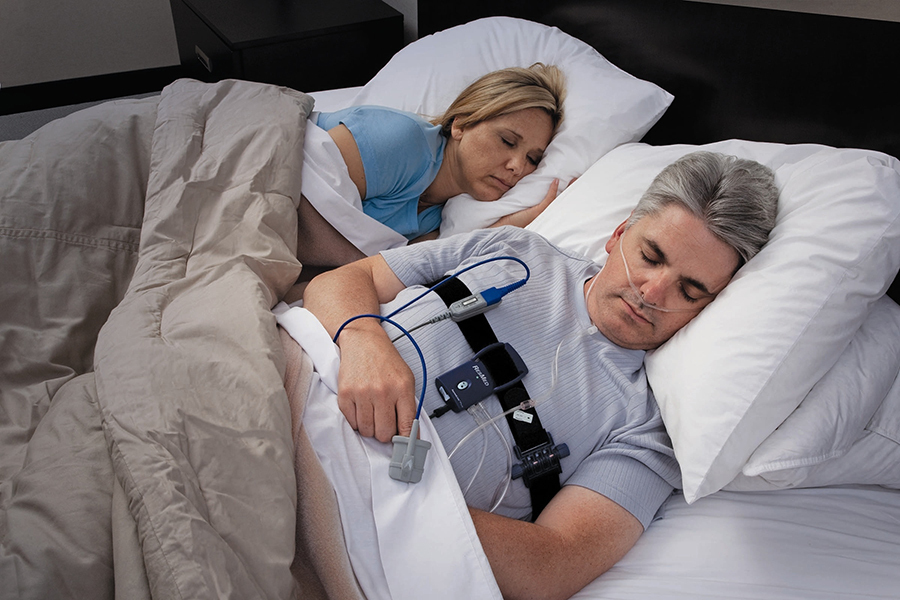Why individuals Choose Sleep Study Bangalore for Better Sleep Health
How a Rest Research Study Can Change Your Rest Patterns: Insights and Providers Available
A rest research study works as a necessary device for people seeking to recognize and enhance their rest patterns. It uses a comprehensive evaluation of rest actions and potential disorders. By reviewing numerous metrics, medical care experts can identify underlying issues that interfere with restorative remainder. This procedure not only aids in diagnosis however additionally sets the phase for tailored therapy strategies. What insights might a rest research study reveal concerning your very own sleep habits?
Comprehending Sleep Researches: What to Expect
When people get ready for a sleep study, they commonly wonder what the experience will certainly entail. These research studies, usually carried out in a rest center, objective to keep track of numerous physical criteria throughout rest. Upon arrival, participants are greeted by experienced specialists that direct them via the procedure. The atmosphere is developed to be comfy, enabling an all-natural sleep experience. Participants may be asked to complete questionnaires regarding their sleep routines and medical history, which assists in the examination.
As the evening progresses, sensing units are connected to the body to track brain waves, heart price, and breathing patterns. While the arrangement might really feel unusual, the objective is to collect precise data on the person's rest patterns. The whole procedure is non-invasive and postures no threat to the individual. Eventually, the data accumulated throughout the rest research study is essential for detecting prospective sleep disorders and establishing effective therapy plans.
Common Sleep Disorders Identified Through Sleep Researches
Sleep studies play a necessary role in determining various sleep problems that can significantly affect an individual's health and wellness and wellness. Common disorders identified through these research studies consist of obstructive rest apnea, identified by duplicated interruptions in breathing throughout sleep, resulting in fragmented rest patterns. Another widespread condition is sleeping disorders, which involves trouble dropping or staying asleep, typically resulting in daytime tiredness and impaired performance. Agitated legs disorder (RLS) is also often observed, triggering unpleasant experiences in the legs and an unmanageable impulse to relocate them during the night. Narcolepsy, a neurological condition that influences sleep-wake cycles, is an additional severe condition determined in sleep studies, leading to excessive daytime sleepiness and sudden sleep strikes. Lastly, parasomnias, which include irregular habits throughout sleep, such as sleepwalking or night horrors, are also noted. Early recognition of these conditions can facilitate prompt intervention and improve overall sleep quality.
The Process of a Sleep Research: From Preparation to Results
Although the procedure of a rest study may seem challenging, it is a organized and methodical method made to collect important information concerning an individual's sleep patterns. Initially, a health care supplier conducts a complete evaluation, talking about sleep history and signs and symptoms with the individual. This evaluation helps figure out the specific focus of the research.
Prep work normally entails guidelines on rest health and medication changes prior to the research. Patients may be advised to prevent caffeine and alcohol to assure accurate results. On the evening of the research study, electrodes and sensing units are placed to monitor mind task, heart rate, breathing, and activities throughout rest.
The information gathered is meticulously evaluated by sleep specialists, who identify any patterns or irregularities a sign of sleep problems. Following this evaluation, a follow-up assessment is organized to talk about the searchings for and possible therapy options tailored to the patient's requirements, facilitating better rest quality.
,aspect=fit)
Kinds of Rest Researches: In-Lab vs. Home Rest Tests
2 main kinds of rest research studies exist: in-lab research studies and home rest examinations, each accommodating different demands and situations. In-lab studies usually occur in a sleep clinic where patients are monitored overnight by healthcare specialists. This technique permits for detailed data collection on different rest parameters, such as brain activity, oxygen degrees, and heart rate. Patients are usually connected to numerous sensing units, providing thorough understandings into their sleep problems, consisting of sleep apnea and narcolepsy.
Alternatively, home sleep examinations offer an easier option for individuals that prefer to perform analyses in their very own environment. These mobile devices keep track of crucial metrics like air movement, oxygen saturation, and snoring. While home tests are less detailed than in-lab research studies, they work as a useful option for identifying common sleep problems. Inevitably, the choice between these two sorts of sleep researches depends on individual preferences, medical needs, and the extent of sleep-related issues.
Interpreting Your Sleep Research Results: Key Metrics Clarified
Understanding the outcomes of a sleep research study is necessary for patients seeking insights into their sleep health and wellness. Trick metrics commonly evaluated in rest studies consist of the Apnea-Hypopnea Index (AHI), which measures the number of apneas and hypopneas per hour of sleep. AHI values assist establish the intensity of sleep apnea, with greater ratings indicating a lot more significant issues. One more essential metric is the overall sleep time (TST), which shows the general duration of sleep throughout the research study. Rest effectiveness, the proportion of time spent asleep to time spent in bed, is likewise vital; higher percents indicate better sleep top quality. In addition, the portion of rest invested in different phases-- light, deep, and REM-- offers insights into sleep style. Understanding these metrics equips individuals with the knowledge needed to discuss their rest patterns with doctor, leading the way for educated decisions regarding their rest health and wellness.
Treatment Alternatives and Suggestions Based on Your Sleep Research study
When a rest study discloses problems such as sleep apnea or other rest problems, numerous treatment choices and referrals appear to boost general sleep wellness. For obstructive rest apnea, continuous favorable airway stress (CPAP) treatment is typically recommended, offering a steady stream of air to maintain air passages open during sleep. Oral appliances might be recommended for light to moderate situations, repositioning the jaw to protect against respiratory tract blockage.
In cases of sleep problems, cognitive behavior modification for sleeplessness (CBT-I) is frequently suggested, focusing on behavior modifications and assumed patterns that interrupt rest. Additionally, way of life alterations such as weight reduction, regular workout, and avoiding alcohol or caffeine before bedtime may improve sleep top quality.

Structure Healthy Rest Habits: Tips for Better Relax
Structure healthy and balanced sleep routines is vital for attaining restorative rest. Establishing a consistent rest routine, limiting screen time prior to bed, and developing a comfortable rest atmosphere can greatly boost sleep top quality. These strategies function as foundational actions for people seeking much better sleep end results.
Establish a Rest Regimen
Establishing a consistent rest routine is crucial for advertising healthy rest practices and enhancing general wellness. Sleep Study Bangalore. A normal rest schedule, where individuals go to sleep and get up at the same time daily, strengthens the body's all-natural circadian rhythms. This predictability helps regulate the sleep-wake cycle, resulting in improved rest quality. Creating a soothing pre-sleep ritual, such as analysis or exercising leisure strategies, can signify the body that it is time to relax. Additionally, optimizing the sleep environment-- by keeping a comfy temperature level, minimizing noise, and making sure darkness-- can even more sustain restful rest. By focusing on these practices, people can grow a lasting sleep routine that cultivates corrective sleep and adds to far better physical and mental wellness
Limit Display Time
As individuals significantly count on screens for enjoyment and communication, restricting display time before bed has actually come to be vital for advertising much better sleep. Research study suggests that exposure to blue light emitted by gadgets such as smartphones, tablet computers, and computer systems can disrupt the production of melatonin, the hormonal agent in charge of managing rest. Experts recommend transforming off displays at least one hour prior to bedtime to enhance rest quality. Involving in alternative tasks, such as reading a book or exercising relaxation techniques, can aid individuals prepare and take a break for rest. By knowingly lowering display time, individuals can cultivate much healthier sleep patterns, resulting in enhanced general well-being and enhanced daytime performance. Prioritizing this element of sleep health is crucial for long-term health.
Create a Sleep Haven
Producing a sleep shelter can considerably improve a person's capability to achieve relaxed sleep. This atmosphere must prioritize convenience and harmony, incorporating components that promote relaxation. An appropriate cushion and cushions are vital, as they directly impact sleep quality. In addition, the space needs to be dark, peaceful, and cool; using blackout curtains and white noise equipments can promote this atmosphere. Individualizing the space with calming shades and aromas, such as lavender, can even more enhance relaxation. Reducing mess likewise adds to a calm environment, permitting psychological clarity - Sleep Study Bangalore. By thoughtfully making a sleep sanctuary, individuals can cultivate much healthier rest practices and develop a consistent regimen, inevitably bring about improved general health and restorative rest
Often Asked Questions
Just how Lengthy Does It Take to See Improvements After a Rest Research study?
Improvements after a sleep study can differ, however lots of his response individuals begin to discover positive changes within a couple of weeks. Constant follow-up and adherence to suggested therapies play important duties in attaining perfect outcomes.

Can Children Undergo Rest Researches, and How Are They Various?
Yes, youngsters can undertake sleep researches, which vary from grown-up research studies in keeping track of strategies and tools. Pediatric evaluations frequently entail child-friendly environments and might include moms and dad engagement to ensure comfort and precise outcomes.
Are Rest Researches Covered by Insurance Policy, and What Are the Expenses?
Sleep researches can be covered by insurance, depending upon the plan and clinical necessity. Prices vary extensively, varying from $300 to $3,000, influenced by the kind visit the website of research study and location of the center.
What Way Of Life Changes Can Boost the Effectiveness of Sleep Research Results?

Applying constant rest timetables, reducing caffeine consumption, producing a calming bedtime routine, and maintaining a comfy rest environment can significantly boost the performance of rest research results, advertising much better sleep high quality and total wellness.
Exactly how Often Should I Repeat a Sleep Research Study for Ongoing Issues?
Individuals experiencing continuous sleep concerns need to consider duplicating a sleep research study each to two years, or as advised by healthcare experts, to keep track of changes and readjust therapy plans efficiently based upon their advancing rest patterns. (Sleep Study Bangalore)
Rest researches play a crucial role in determining different rest conditions that can substantially affect a person's health and well-being. Typical disorders found via these studies consist of obstructive rest apnea, characterized by repeated interruptions in breathing during rest, leading to fragmented sleep patterns. When a sleep research discloses issues such as rest apnea or other sleep conditions, numerous treatment choices and recommendations become available to boost general rest health. Establishing a regular rest routine, restricting screen time prior to bed, and creating a comfy rest atmosphere can greatly enhance sleep quality. In addition, maximizing the sleep atmosphere-- by preserving a comfortable temperature level, lowering noise, and ensuring darkness-- can additionally support relaxing this post rest.